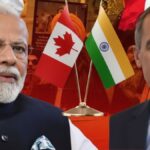The Federal Reserve’s recent decision to cut interest rates in September 2025 reflects its careful effort to balance its dual mandate: promoting maximum employment while maintaining stable prices. This unique mandate guides the Fed’s monetary policy to foster a healthy U.S. economy despite conflicting economic pressures.
What Is the Federal Reserve’s Dual Mandate?
The dual mandate, established by Congress, directs the Federal Reserve to achieve two primary economic goals: maximum employment and inflation control, targeting roughly 2% inflation over the long term. Maximum employment means keeping unemployment at the lowest level sustainable without triggering runaway inflation. Meanwhile, price stability helps consumers and businesses plan for the future without fear of sudden spikes or drops in prices.
How Does the Rate Cut Influence Employment?
By lowering interest rates, the Federal Reserve makes borrowing cheaper for businesses, encouraging expansion and hiring, which supports job growth. The September 2025 rate cut comes amid signs of slowing job gains and a slight rise in the unemployment rate. Policymakers believe that this modest reduction will help stimulate the labor market without overheating the economy.
Inflation Control Remains a Priority
While supporting employment, the Fed remains vigilant about inflation, which continues to be above the 2% target. Stable inflation ensures that consumers retain purchasing power and businesses can make sound investment decisions. The Federal Open Market Committee (FOMC) acknowledges the challenge of balancing these two goals and has emphasized a “balanced approach” to managing inflation and employment risks.
The Ongoing Balancing Act
The Federal Reserve’s dual mandate requires constant adjustments as economic conditions evolve. Sometimes the goals are complementary—low inflation supports job growth—but in other times, they conflict. For example, aggressive interest rate hikes to curb inflation in recent years led to higher unemployment. The Fed’s September rate cut signals a shift toward cushioning labor markets amid persistent inflation challenges.
Related Reads
- Federal Reserve Interest Rate Cut 2025: What It Means for the Economy
Learn the background and key reasons behind the Fed’s latest rate cut decision. - Market Reactions and Future Outlook After Federal Reserve Interest Rate Cut
Analyze how investors and markets responded to the Fed’s move and what to expect next. - Understanding Federal Reserve Rate Cut Decisions: Process and Criteria
Discover the inner workings of the FOMC and the criteria that shape rate decisions.
The Federal Reserve’s dual mandate driving this interest rate cut demonstrates its commitment to navigating complex economic trade-offs. As the economy adjusts, Fed policymakers will closely monitor jobs and inflation to ensure sustainable growth.


























